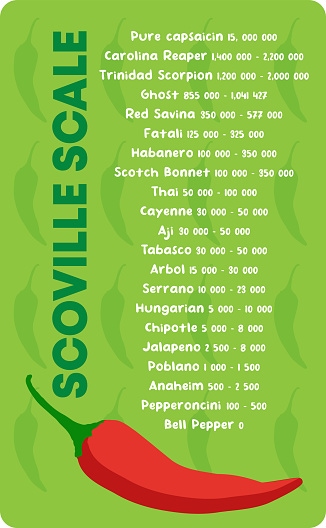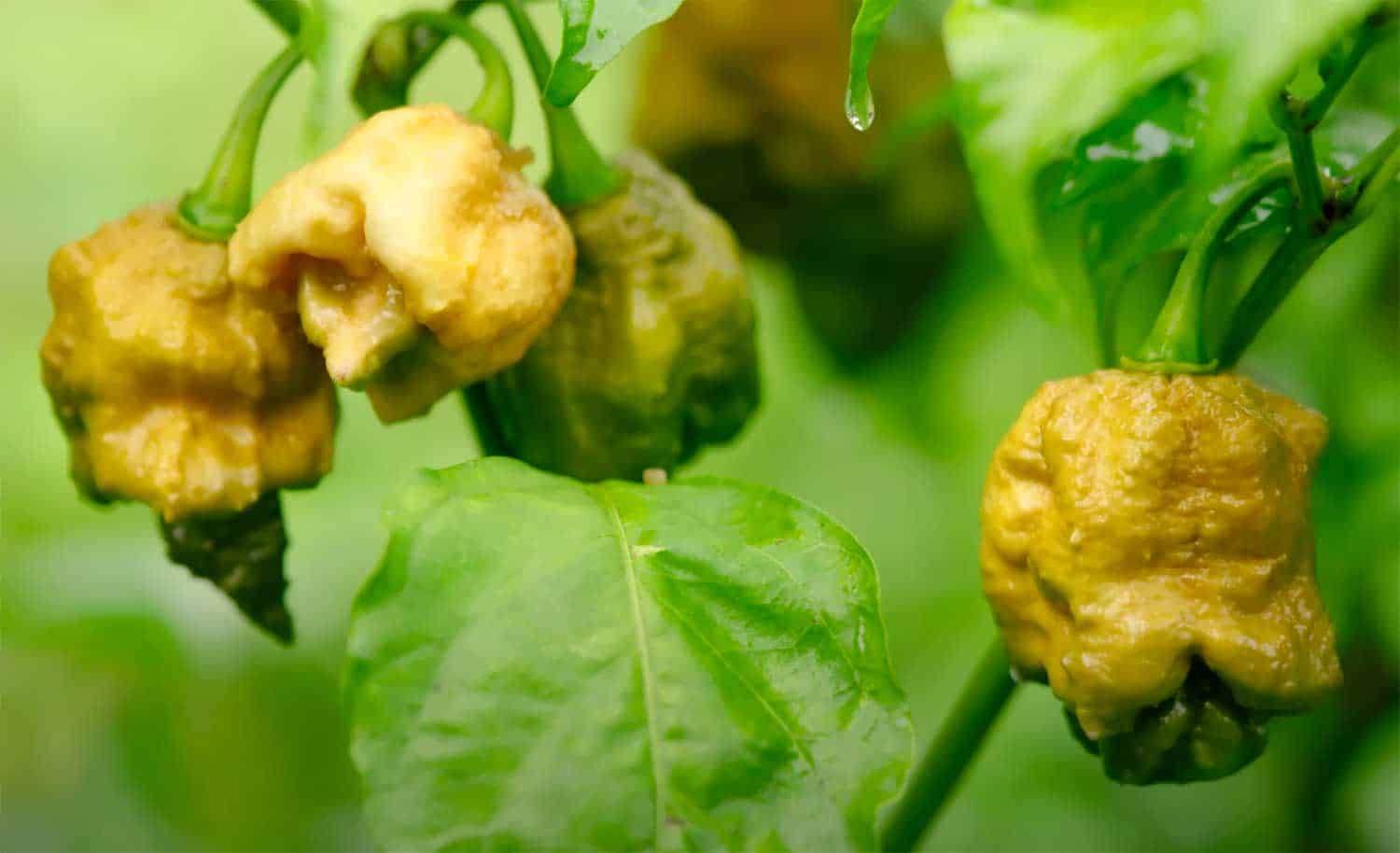There’s a new pepper in town, and it’s not for the faint of heart!
Just this year, a new pepper beat the Carolina Reaper as the spiciest pepper in the world. This pepper, called Pepper X, was a long time in the making and has topped the spice charts with a pungency of 2.69 million Scoville heat units.
How did Pepper X come to be? What are Scoville units, in the first place? Read on to answer all your questions about the world’s newest pepper.
History of Pepper X

While Pepper X has taken the world by storm, it’s not available for public purchase.
Chili pepper breeder Ed Currie bred Pepper X. Ed Currie has a renowned history of creating some of the spiciest peppers in the world. In fact, Pepper X’s rival, the Carolina Reaper, was also bred by this chili mastermind!
Pepper X took over ten years to create. Ed Currie bred around one hundred distinct peppers annually. When peppers are bred, not all create successful, hot hybrids. Ed Currie bred so many peppers so that he could choose the best of the best to grow and crossbreed over an entire decade.
Capsaicin is the chemical component that brings heat (also called pungency) to chili peppers. Currie specifically bred hybrid peppers that possessed extremely high amounts of capsaicin. As the hybrids bred and grew, the results became more and more spicy.
One of the reasons Pepper X is so spicy is due to its surface area. Spicy peppers are often wrinkly, and the wrinkles increase surface area. A larger surface area means that there are more spots for spice to occupy. Pepper X’s spice is contained primarily within its locules, which are the areas that contain the seeds. More space means more capsaicin!
What Are Scoville Units?

Check out the Scoville units of some of the many chili peppers on Earth. You’ll notice that Pepper X isn’t even on the list yet!
©Julie Deshaies/iStock via Getty Images
Scoville units are the unit of measurement for pungency, also known as heat or spice level. Scoville units, now, are determined by a chemical test that assesses the level of capsaicin within a chili pepper. Historically, Scoville units were identified somewhat subjectively through taste tests. Now, scientists have developed techniques to accurately and objectively assess Scoville units.
The Scoville scale ranges from 0 to 15,000,000 Scoville heat units (SHUs). Bell peppers possess no capsaicin, so they have a Scoville heat measurement of 0. Pure capsaicin is the most spicy thing on Earth, and that has brought in a reading of 15,000,000 SHUs.
Pepper X is the leader in spicy peppers with a Scoville heat measurement of 2,690,000 SHUs. This rivals the previous spiciest pepper in the world, the Carolina Reaper. The Carolina Reaper’s measurement is 2,200,000 SHUs.
It’s important to note that the concentration of capsaicin within an individual pepper also varies. For example, you’ve likely encountered a jalapeno that felt way spicier than the jalapenos you’ve had in the past. The SHU range of a jalapeno is 2,500 to 8,000. That means a jalapeno can be three times as hot as a different jalapeno!
How Do You Crossbreed Peppers?

When cross-breeding peppers, you have to be careful to make sure they don’t self-pollinate before you do the cross-pollination process.
©AlexeiLogvinovich/Shutterstock.com
In simple terms, peppers are crossbred by using the pollen of one breed of pepper to fertilize a different breed of pepper. This can happen accidentally if you plant two types of peppers near one another, or intentionally, as is the case with Ed Currie.
The timing of the breeding of peppers is a bit counterintuitive, however. You may think that if you cross a bell pepper with a jalapeno, for example, you’ll end up with a mixed breed next year. However, that is not the case.
The crossbred pepper’s genetic presence appears in the seeds of the following year’s harvest. So your bell peppers and jalapenos will look and taste just as they always do, but once you plant the seeds of those crossbred plants, you’ll have created a hybrid. With that in mind, it’s easier to understand why Currie took a decade to create Pepper X. Hybrid crosses aren’t instantaneous.
There are a few different techniques for cross-pollinating peppers, but Currie uses a delicate tool: a paintbrush. He removes the pollen from one breed of pepper with a paintbrush and fertilizes a different breed of pepper.
What Happens When You Eat Pepper X?

The consumption of extremely pungent food can result in physical damage, so tread carefully if you want to test out some of the spiciest peppers on the market.
©frantic00/iStock via Getty Images
Pepper X is extremely spicy. Scientists are continuously investigating the effects of eating extremely pungent peppers like the California Reaper, and Pepper X seems to cause some uncomfortable physical symptoms. Abdominal cramping seems to be the primary symptom, though you can expect a pretty high level of overall discomfort from the consumption of such a spicy pepper.
Conclusion
Ed Currie once again demonstrated his genius in crafting some insanely spicy peppers. The creation of Pepper X is an incredible scientific (and perhaps, culinary) feat. As always, use caution when considering the ingestion of these spicy peppers! Ironically, they may not leave you feeling so hot!
Thank you for reading! Have some feedback for us? Contact the AZ Animals editorial team.








